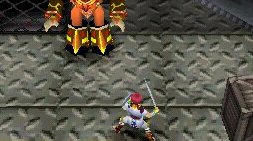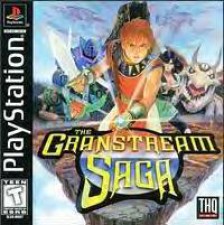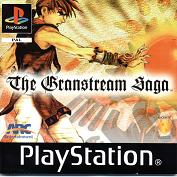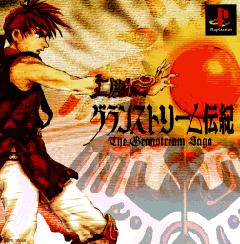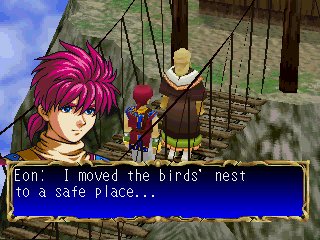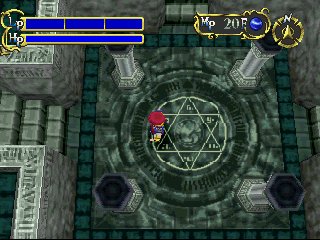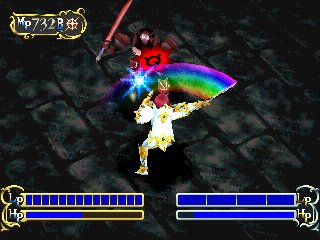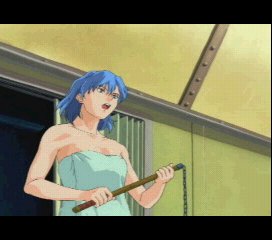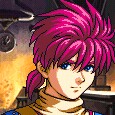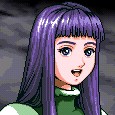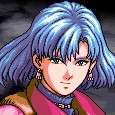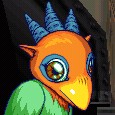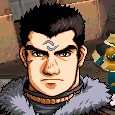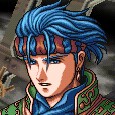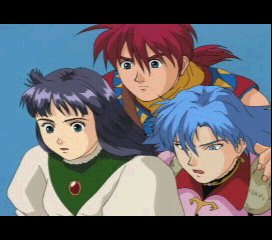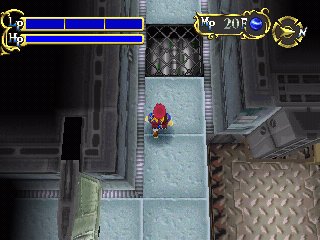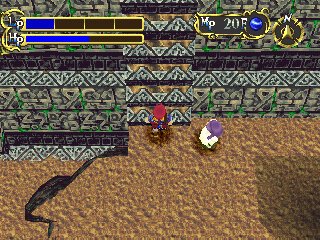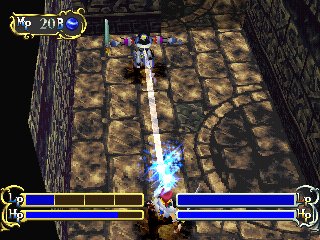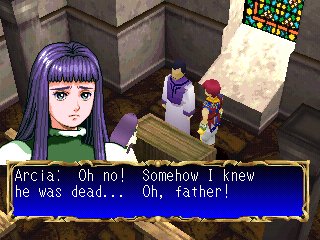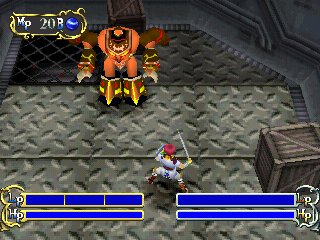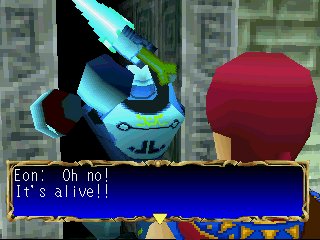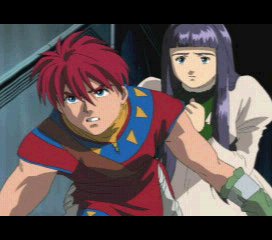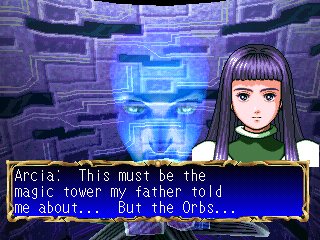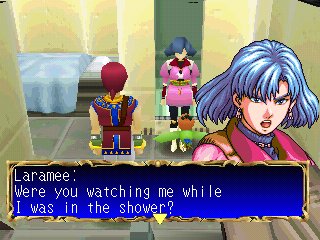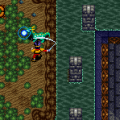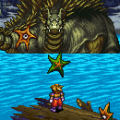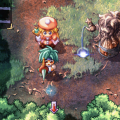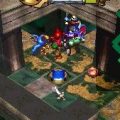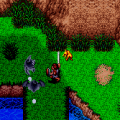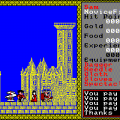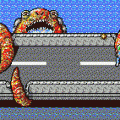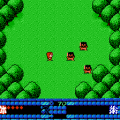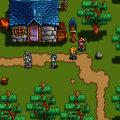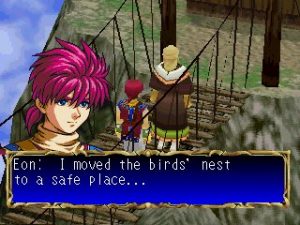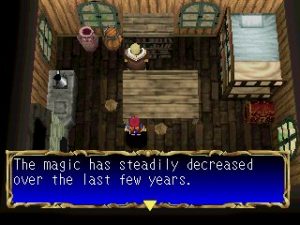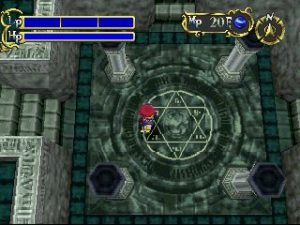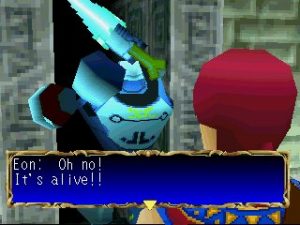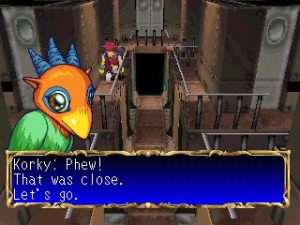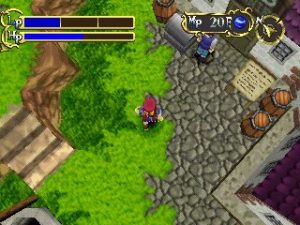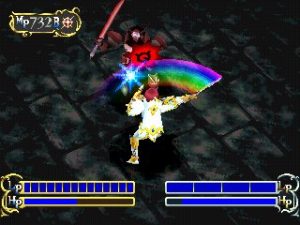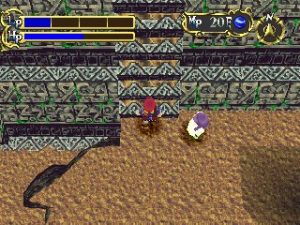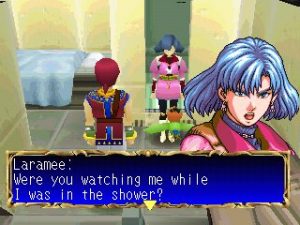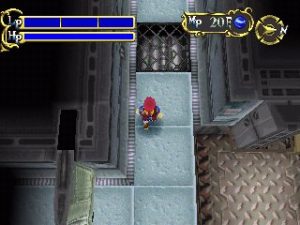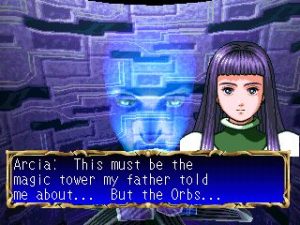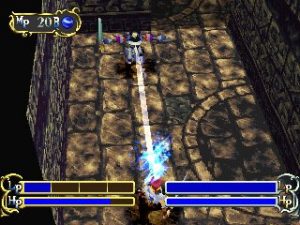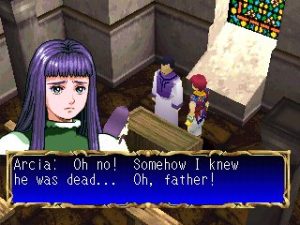Shortly after Terranigma, Quintet and Enix went their separate ways. This was a quite common occurrence during this transitional period from the 16-bit era to the 32-bit era. A new dawn for gaming was looming overhead and certain developers foresaw that Nintendo might not be the king for much longer, and saw the massive amount of potential in Sony’s new console. In hindsight, this was a wise decision for most developers, but it didn’t really make much of a difference for Quintet, who would soon be dropping off the face of the planet and Enix merging with Square to become one of the largest Japanese publishers ever known.
Before Quintet finally kicked the bucket, they squeezed out a very much ignored final chapter to their loosely knit Soul Blazer franchise. No longer under Enix’s reign, the game was published in Japan by Sony and developed by a house known as Shade. Shade was Kouji Yokota’s own development studio, consisting of some of the same staff who made ActRaiser, Robotrek and the Soul Blazer games. In essence, Shade is the successor to Quintet. In Japan, it was a highly anticipated title that debuted at #1, successfully bumping Final Fantasy VII off the top spot where it had been for months. In America, Granstream was published by Toy Headquarters (THQ), which was more known for N64 wrestling games and the much-loathed Quest 64. Between the lack of Quintet’s brand and the label of a company that was becoming synonymous with crap, Granstream Saga didn’t fare well at all and is not considered part of the Soul Blazer series by most fans despite its obvious spiritual links to the previous three games.
Aside from coming to the plate with two strikes against it already, The Granstream Saga is a very good game that wasn’t accepted very well by critics because of its weak presentation. At the time, critics were most prominently concerned with graphics. Any game that looked pretty generally got higher scores, and ugly ones didn’t. Even all time classics like Final Fantasy Tactics and Castlevania: Symphony of the Night, while generally reviewing well, still got marked down for “old” looking visuals. That’s as simple as it was. Surprisingly, GamePro, of all publications, seems to have been the only publication that actually spent a significant amount of time with the game, and gave it a 5/5 score, praising its cinematics, its highly entertaining combat system, and its well developed story and characters.
Granstream, much like its ancestors, begins with a world that’s been mostly destroyed. 100 years or so before the story begins, a great war was waged between the Allied Spirit Army (the good guys) and the Imperial Wizardry (the bad guys). The battle was at a stalemate that lasted for quite some time, with neither side gaining the advantage. Then, the Imperial Wizardry employed a special weapon that could be fired into the core of the planet, causing geological disasters in enemy territory and destroying them from the very core of their infrastructure. However, there was a severe miscalculation, and the weapon caused the planet’s axis to shift. This caused the polar ice caps to melt and flood the entire world.
Before the world could be swallowed by the sea, four wise men created a mechanism that would allow four of the planet’s continents to float, evading the calamity below. The wise men left this mechanism in the care of their descendants. But now, 100 years later, the wise men’s descendants have disappeared. Without them, the mechanisms keeping the continents airborne is weakening, and they’re slowly sinking toward the ocean.
Enter Eon, a young man living on the continent of Shilf with his foster father. One day, Eon and his father explore an ancient ruin, and Eon’s latent powers are suddenly activated via the use of an artifact called The Orb, which was found with Eon when he was a baby. Eon’s father sees this power and feels that he may be the key to saving the sinking continents. He sends him on a mission to rescue a captive girl named Arcia, who is solely capable of restoring power to the orbs which control the floating mechanisms of the continents. After hitching a ride with some sky pirates, Eon’s adventure to save the continents begins.
Characters
Eon
The hero. He possesses an ancient artifact called the orb, which can store the form of anything Eon touches in its memory and can materialize it at Eon’s will. Looks and acts very much like Adol from the Ys series, except he can actually talk.
Arcia
Your average everyday RPG heroine. Soft, caring, timid, etc. She has to perform the song known as the Lifting Verse in order to keep the continents afloat.
Laramee
One of the Desbat Air Pirates. Tags along with Eon on his mission after he stows away onboard the Gude Airship, and eventually falls in love with him.
Korky
Laramee’s pet spirit beast that can transform into a giant bird. Accompanies Eon on most of his dungeon ventures and makes all sorts of suggestions.
Gandor
Current captain of the Desbats in Slayzer’s absence. This guy is pretty much identical to Dogi from the Ys series, complete with a tendency to smash through walls when his friends are trapped.
While Granstream Saga‘s story is rooted in conventional RPG cliches, it takes a lot of atypical twists and turns and the relationships between the characters is very advanced and interesting to watch. There’s a lot of emotional events that make you care about the characters much more than in your average RPG. Granstream takes after Illusion of Gaia in this sense, and also in the fact that many of the characters die over the course of the game. The series staple theme of death and resurrection is also very present, especially toward the end of the game.
The overall flow of the game feels a lot more like Illusion of Gaia than Terranigma, with the game being very linear and more story-oriented. It still has the flavor of Soul Blazer, however, with Eon traveling from one elemental area to another, each with several elemental dungeons attached to it. Rather than restoring people and places, your goal is to restore power to the orbs keeping the continents in the air.
The most drastic change comes in the gameplay department. While the overall gameplay in terms of dungeon exploring remains very much unchanged from Gaia and Terranigma, the combat has been completely revamped. All battles are one-on-one. You encounter enemies on the dungeon maps and enter battle mode. These aren’t separated from exploration, rather, the camera just zooms in on Eon and part of the area is cut off to keep you and the enemy in close quarters. Eon uses the orb to manifest his armor and weapons and then you do battle. The combat is very complex. Pressing X makes Eon attack, and he has a wide variety of attacks depending on what he’s doing while attacking and what kind of weapon he’s using. He can also dash in every direction by double-tapping the D-Pad, block with a shield using circle, and he can use magic with triangle.
There’s 3 basic weapon types; swords, daggers and axes. Daggers are quick but weak, axes are slow but strong, and swords are evenly balanced. As mentioned, Eon’s attack variety is vast. He can perform standard combos by standing still and mashing X, a guard-break maneuver using his shield while dashing forward, a powerful thrust by pressing forward and X, and he can slash while dodging to the side. As Eon finds new weapons, he learns new special attacks. These do massive amounts of damage, but tend to come out very slow. He also has a slew of magic spells which come out instantly and can demolish enemies weak against certain elements.
In terms of growth, Eon levels up, but not in typical EXP-gaining fashion. He levels up accordingly at certain intervals during the game. Leveling up increases his individual stats, like HP, MP and Strength, but his most important stat is his LP, which are only increased by finding Sources of Life, usually well-hidden throughout the game world. Each LP represents a full serving of HP. Think of them as Energy Tanks in Metroid. If you have 250 HP, but 5 LP, you essentially have 1250 HP.
When taking Granstream Saga‘s graphics into account, you need to consider that it was the first attempt at a fully realized 3D RPG. Yes, King’s Field was 3D, but it didn’t have in-game cutscenes. It was pure gameplay. Granstream Saga‘s character models looked very primitive not long after its release because every game that came out seemed to push the bar of graphical standards higher and higher. As a result, the character models don’t have any faces. Technically, the character in Metal Gear Solid didn’t either, though they did have some vague features that made them look human. Here, it just looks weird and creepy. Aside from the somewhat rustic character models, the backgrounds and texturing is very strong. It should also be noted that the game maintains a constant 60 FPS framerate, something of a rarity in PS1 RPGs.
One of Granstream Saga‘s more heralded features are its anime cutscenes, done by the same talents behind the cutscenes in the later released Xenogears. These are very frequent. You’ll be treated to an anime cutscene of some sort about every 40 minutes to an hour, and some of these are quite long. The animation quality is nothing to write home about, but the simple fact that they’re so frequent is admirable.
Another area where the game really shines is in its music. Kouhei Tanaka (Alundra, Tengai Makyou), Takako Ochiai (Terranigma, Tenchu) Miyoko Kobayashi and Masanori Hikichi (Terranigma, Ys IV: Mask of the Sun), have composed an amazing and highly varied soundtrack consisting of synthesized, instrumental, and even orchestrated pieces. The orchestral pieces in particular are some of the best from this early PS1-era of gaming.
With its immensely enjoyable combat system, excellently executed story, and very strong presentation, Granstream Saga is easily Quintet’s finest work. Where Quintet/Shade have gone now, I’m not sure. Yokota’s last few games were the ancient PS2 RPG Orphen, and one of the Bouken Ou Beat games in 2005. Quintet hasn’t really seen any activity lately either, with their last official release being Godzilla Generations on the Dreamcast, and their website hasn’t been updated in years. Perhaps one day, the Soul Blazer series may continue, but the outlook is not very good.
